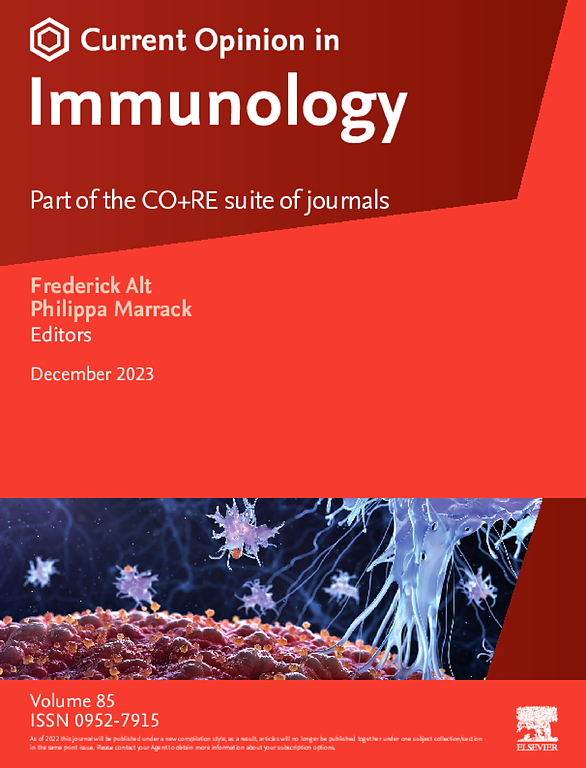过敏性疾病中的上皮传感
IF 6.6
2区 医学
Q1 IMMUNOLOGY
引用次数: 0
摘要
上皮细胞通过维持屏障功能、协调粘膜纤毛清除、分泌抗微生物分子以及产生哨兵信号来激活先天性免疫细胞和形成适应性免疫,从而提供第一道免疫防线。虽然上皮促敏素在过敏原引发的 2 型炎症中发挥着特别重要的作用,但人们对上皮细胞感知环境并调节促敏素生成和释放的机制却知之甚少。最近的研究发现了屏障上皮细胞用于诱发 2 型炎症的新传感器和信号通路,包括从细胞核释放白细胞介素-33 的新通路,该通路依赖于细胞凋亡信号。这些最新发现对过敏性疾病(从特应性湿疹到食物过敏、鼻炎和哮喘)的发展具有重要意义。本文章由计算机程序翻译,如有差异,请以英文原文为准。
Epithelial sensing in allergic disease
Epithelial cells provide a first line of immune defense by maintaining barrier function, orchestrating mucociliary clearance, secreting antimicrobial molecules, and generating sentinel signals to both activate innate immune cells and shape adaptive immunity. Although epithelial alarmins play a particularly important role in the initiation of type 2 inflammation in response to allergens, the mechanisms by which epithelial cells sense the environment and regulate the generation and release of alarmins have been poorly understood. Recent studies have identified new sensors and signaling pathways used by barrier epithelial cells to elicit type 2 inflammation, including a novel pathway for the release of interleukin-33 from the nucleus that depends on apoptotic signaling. These recent findings have implications in the development of allergic diseases, from atopic eczema to food allergy, rhinitis, and asthma.
求助全文
通过发布文献求助,成功后即可免费获取论文全文。
去求助
来源期刊
CiteScore
13.30
自引率
1.40%
发文量
94
审稿时长
67 days
期刊介绍:
Current Opinion in Immunology aims to stimulate scientifically grounded, interdisciplinary, multi-scale debate and exchange of ideas. It contains polished, concise and timely reviews and opinions, with particular emphasis on those articles published in the past two years. In addition to describing recent trends, the authors are encouraged to give their subjective opinion of the topics discussed.
In Current Opinion in Immunology we help the reader by providing in a systematic manner: 1. The views of experts on current advances in their field in a clear and readable form. 2. Evaluations of the most interesting papers, annotated by experts, from the great wealth of original publications.
Current Opinion in Immunology will serve as an invaluable source of information for researchers, lecturers, teachers, professionals, policy makers and students.
Current Opinion in Immunology builds on Elsevier''s reputation for excellence in scientific publishing and long-standing commitment to communicating reproducible biomedical research targeted at improving human health. It is a companion to the new Gold Open Access journal Current Research in Immunology and is part of the Current Opinion and Research(CO+RE) suite of journals. All CO+RE journals leverage the Current Opinion legacy-of editorial excellence, high-impact, and global reach-to ensure they are a widely read resource that is integral to scientists'' workflow.

 求助内容:
求助内容: 应助结果提醒方式:
应助结果提醒方式:


